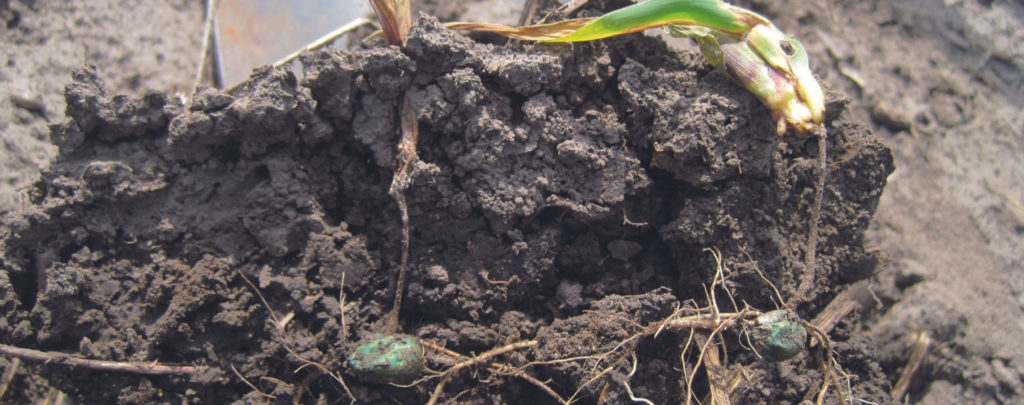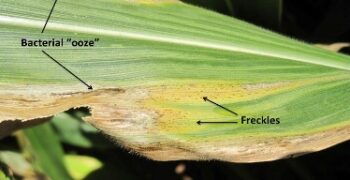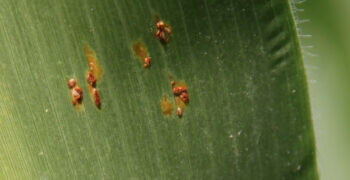Background:
Seedling Blights caused by Pythium are very common after early planting of corn and soybeans. Fungi in the genera Pythium are often called water molds because they thrive in cool wet soils. Soil temperatures at around 50 to 60˚F are optimal for fungi like Pythium. They overwinter in soil and plant residue as oospores. In order for oospores to germinate, they need moisture. Once germinated the motile spores are called zoospores and they will attack the seedling or root system.
Favorable Conditions and Symptoms:
Early planting in wet, cool soils are optimal conditions for Pythium Seedling Blight to occur. This fungus works by infecting a substantial portion of the developing root system including the mesocotyl. Infection of the mesocotyl can result in a loss of the primary root system, causing the developing seed to die unless secondary roots have developed. Corn plants during the first few weeks after emergence may grow more slowly and will appear less healthy when their primary roots are infected with Pythium. If the plant as a whole becomes infected with Pythium then the seedling or emerged plant will be dark colored and rotted.
Management:
The potential for Pythium Seedling Blight to infect corn is caused by less than optimal planting conditions. Persistent cool and wet conditions after planting that result in non germination can increase the risk of disease. Seed treatments may provide protection for 10 to 14 days. Other management measures for seedling emergence is to improve drainage in low or wet areas of the field. Avoid planting when soils are wet and cold, especially in no-till or in areas with heavy crop residue as they tend to retain moisture.



